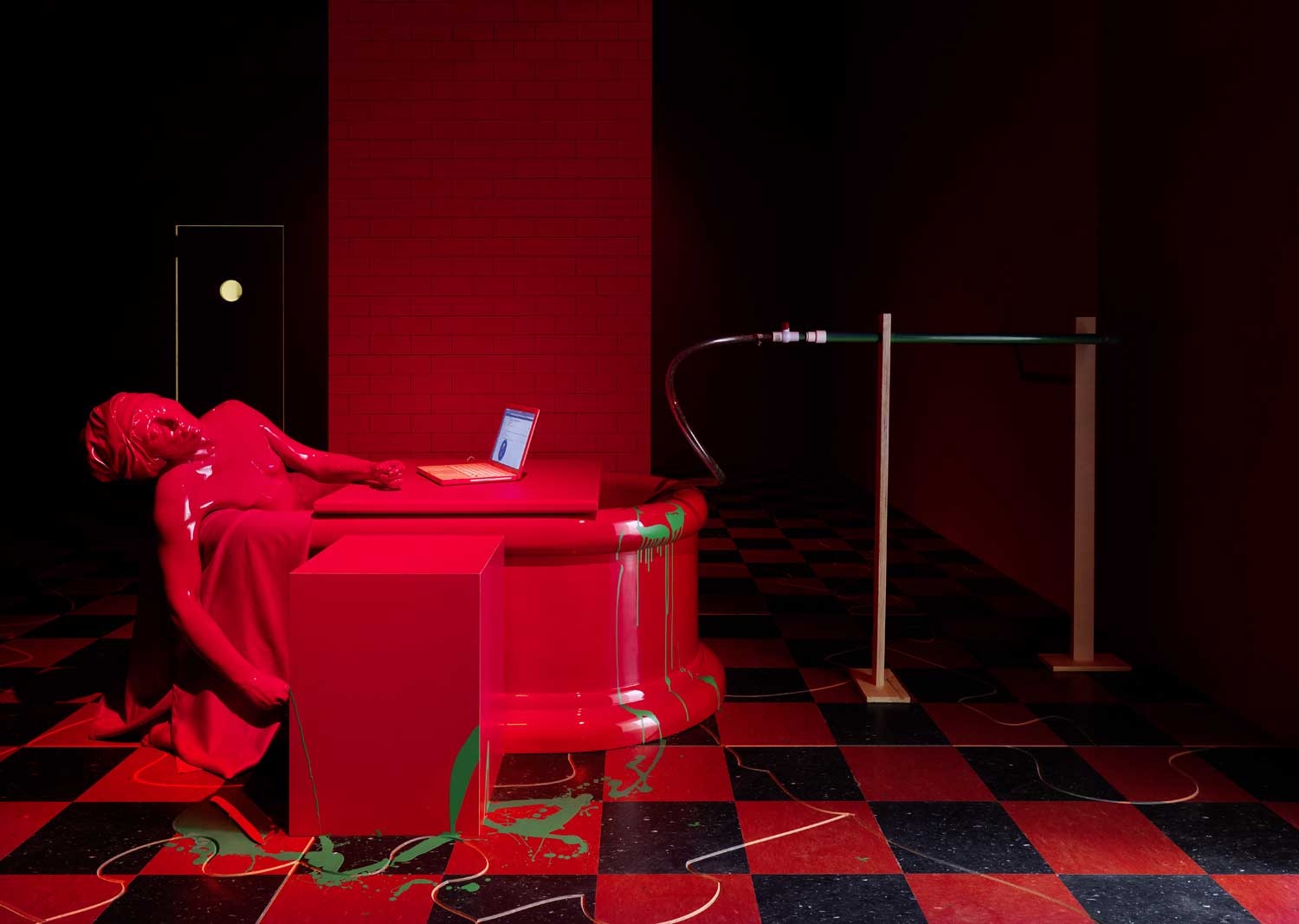Richard Jackson splurts and smears, splotches and splatters, leaving ‘Jack the Dripper’ looking like a rank amateur at the art of making a massacre with mere paint. For 40 years, enshrined here in installations and drawings with coteries of remakes of various kinds, Jackson’s existential investigations into the meaning and existence of paint embody the opposite of the cool analysis done by Gerhard Richter. The American artist’s paintings are viscous and undulating and alive, still wet and sticky.
Jackson emerged between the pure feeling that was still twinkling in the twilight of the Greenberg regime and the rocks and other hard places presented by a much more literal Minimalism. To him, the problem was how to make paint conceptually meaningful, how to invest it with ideas and new life. With Sisyphean labour and Frankensteinian ingenuity, Jackson left no avenue unpainted. He made paintings with windshield wipers and spun out Vespas, with rifles and washing machines, built canvas rooms containing a hectic abattoir’s amount of pigment, gooed paint through carpets and had it carried by aeroplanes to crash and splatter into walls. At some point, tit-eyed ducks, fake deer asses, imitation dog cocks, Degas’s dancers and other stand-ins got drafted into Jackson’s army, each performing some act of painting on the artist’s behalf. Objects occasionally distract, but not for long, and even most of these get wet.
My favourites are the simplest in concept and the most difficult in production: stacks and stacks and stacks of canvases, sometimes like bricks, sometimes in imperfect crisscrossed spheres, sometimes just piled to the ceiling to fill the space, each one mortared to the next with paint. Everything is made and executed by the artist with sheer persistent labour, a dogged determination and endurance that always beats out the competition. Summed up and separated, they might make Jackson the most prolific painter of his generation.
But generations are rarely so easily summed up. Jackson found himself looking towards Jasper Johns and Marcel Duchamp, living in the same house as Bruce Nauman and finding friendship in subsequent generations, including Paul McCarthy and Jason Rhoades (these last two messy motherfuckers in their own right, or ‘clusterfuck aestheticists’, to invoke a Jerry Saltzism from way back).
The crowd faves are the cleanest, of course. Every review from Jackson’s recent upswing stone-raves about a series of paintings in which the artist paints the canvas of a handful of pictures and then circular-smears them against the wall. Beautiful as they are, they look almost quaintly contained compared to all the other science experiments Jackson performs with paint, the hypotheses endlessly played out with visceral glee: ‘painting lives’.
This article was first published in the April 2013 issue.
